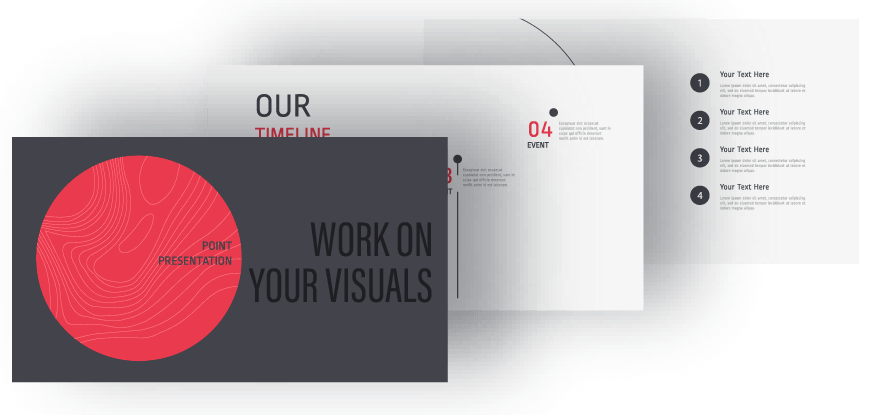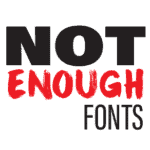How many times have you sat through a presentation that was boring in every possible way? The nervous speaker couldn’t deliver it properly, the slides were overcrowded with information, and everyone’s thoughts seemed to be elsewhere. To avoid being that presenter, let’s talk about ways you can enhance your presentation, level up information delivery, and interact with your audience. With a few iterations, these tips will become second nature and greatly improve the overall impression.
Last week we’ve talked about some cool features of the PowerPoint Presentation. Today, we continue the topic with simple presentation lifehacks.
Interact With Your Audience

When several people are giving you their time and attention to deliver a presentation, it’s only ever fair to make sure you give them your attention back. Interacting with the audience allows the speaker to build rapport and increase attention retention so that people’s thoughts don’t wander off.
Every speaker has to compete with the entertainment machine that everyone has in their pockets – phones. So in order to win people’s attention, here are several tips on how to structure your presentation.
- Start off with a question. When people enter the room, they all bring their thoughts and worries to the table. To make sure that everyone is on the same wavelength, use a simple energizer to bring a sense of unity and shake it up. Ask questions that can be answered by show of hands or do a quick stand-up introduce yourself exercise.
- Plan for questions. To switch between tasks, plan slides in between main sections so that people can ask questions as you go. To make sure that those QnA slides don’t become a proper QnA session, set a timer on the slide for a few minutes depending on how much time you can allocate to this. In case no one, asks questions, make sure to have a few typical questions in your sleeve.
- Use storytelling. Telling people what to do even if you have the best intentions in mind can make them defensive and prevent from applying the information to their life. Storytelling, on the other hand, allows your audience to follow the character and draw conclusions.
- Use Kahoot! In case you want to collect some statistics or simply make your presentation more interactive, consider including a quick Kahoot! or Quizlet round. These websites allow the presenter to start a multiple-choice game which the audience can play on the phones independently or as a team.
Work On Your Visuals
Having crisp photos and videos will help you engage the audience especially if those visuals are there for a reason and not to occupy the otherwise empty space. Here are several resources such as photo stocks you can use to add some colours to your slides.

Photo Stocks allow users to save and use royalty-free photos without giving credit to the artist. You can use photos and videos in personal, educational, and professional settings as well as for commercial purposes. Some of the popular platforms that provide visuals for free are Pixabay, Pexels, and Unsplash.
Add Some Music as well as sound effects to your slides to provide background noise before the start of the presentation and during the talk to grab the audience’s attention. Stock music can also be used in videos for your own nonprofit or commercial projects. Mixkit and Bensound will allow you to listen to music tracks before signing up with a free account.
Follow the 5/5/5 rule. PowerPoint slides may feel overwhelming because we tend to want to put all the information on one slide which is not user-friendly at all. As a rule of thumb, don’t write down full sentences but rather use bullet points. The 5/5/5 rule states that we need to have no more than five words per line, no more than five lines per slide, and no more than five text-heavy slides in a row.
Stick to one colour scheme. Using too much design, fancy colours and bright pictures may simply come across as unprofessional let alone hard to read. To get inspiration for background colours, matching colour schemes and sophisticated designs, visit several PowerPoint Presentation template stocks to find something appropriate for your occasion. In addition to Canva which is a go-to website for all sorts of visuals, SlidesGo, and Slides Carnival provides free templates to download and use for your presentations.
Go Extra with Fonts
In case you want to use custom-made fonts in your presentation, you might enjoy the free membership on EnvatoElements. This website is an all-in-one platform that has stock videos, motion graphics, presentation templates, music, sound effects, photos, fonts, and more. With free membership, you can download up to 12 files per month.
Swap Photos for Icons
If you want to go minimalistic on your presentation, you can use flat icons instead of photos. Various platforms provide free icons both for commercial and personal use in presentations and visuals. SquidInk offers 50 free, flat icons that can be used in unlimited projects. Other websites like FlatIcon, Eight Icons, and The Noun Project provide access to more than 3 million icons to choose from.
Presentation Checklist
Once you explore all the options there to boost your visual aspect of the presentation, it’s time to go over several aspect that will help you stay on top of what you need to prepare to make sure your presentation is coherent and on point. University of Technology of Sydney provides a great resource to evaluate your presentation against some of the typical criteria. Here are some of general points to consider when working on your presentation:
Content
- A brief orientation to the topic is provided
- The content is ‘pitched’ at an appropriate level for the audience (neither too difficult nor simplistic)

Organization of information
- The introduction includes an outline or preview of the content
- The main points are well developed and contain some analysis as well as a description
- Information is selected carefully to make your point clearly without too much detail
Original sources
- The required number of resources is used
- Sources are appropriately acknowledged, both verbally and on slides using appropriate reporting structures
Conclusion
- An appropriate summary of the main points is made and the thesis is restated
- Concluding comments are made in support of the main purpose of the talk
Body language
- Appropriate eye contact is regularly made with most of the audience
- Natural body posture and hand gestures are used
Language
- Grammar does not impede meaning and sentence structures are accurate
- Extensive range of vocabulary is used accurately
- Pronunciation (especially of keywords) is correct
- Voice is clear and well projected
- Intonation and stress on words is natural
- Pace is appropriate
Discussion
- An invitation for questions is offered
- Questions and discussion are handled confidently. Responses that cannot be provided may be followed up later
- Time is devoted to group discussion and feedback (where necessary)
Although you may not necessarily need to go into that much detail when thoroughly preparing for all your presentations, knowing that there are numerous resources available to support you will provide that little extra confidence while structuring the information. All that’s left is reasonable time management and following the evaluation criteria.
Photos: Shutterstock / Photomontages: Martina Advaney
Support us!
All your donations will be used to pay the magazine’s journalists and to support the ongoing costs of maintaining the site.
Share this post
Interested in co-operating with us?
We are open to co-operation from writers and businesses alike. You can reach us on our email at [email protected]/[email protected] and we will get back to you as quick as we can.












